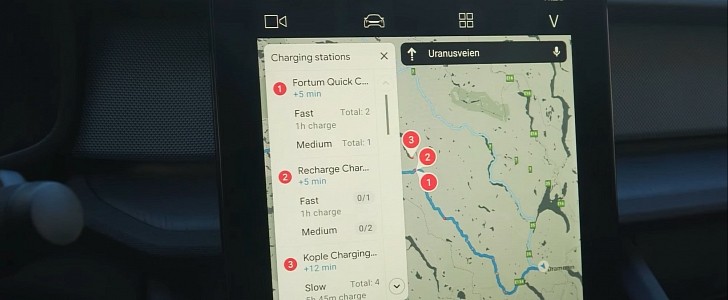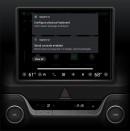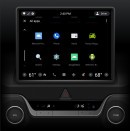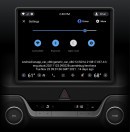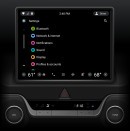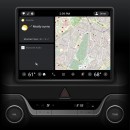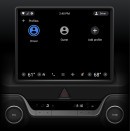Google has turned Google Maps into the world’s most popular navigation solution, but this doesn’t necessarily mean the search giant has stopped improving its service.
Not at all, as Google Maps keeps evolving with new capabilities that make it even more advanced, accurate, and helpful for users out there.
Google Maps is already available pretty much everywhere, including on mobile devices and in the car with Android Auto and CarPlay. But the Mountain View-based search giant is now working on making Google Maps a more integral part of the driving experience by turning the app into a first-class citizen of the Android Automotive world.
Google Maps therefore comes bundled with Android Automotive, and this means it’s getting plenty of new capabilities that aren’t otherwise available in the “classic” version.
This is the next-generation Google Maps, and the only way to get a taste of it is by buying a new car running Android Automotive.
In addition to the standard capabilities that are available on all the other devices, Google Maps built into the car (this is exactly how Google refers to this new version of the app) can do so much more.
And it all starts with electric vehicles.
Google Maps can monitor the battery level and provide information about the current charge on your arrival. It can also issue important battery alerts and be provided with charging assistance. Google Maps can track the battery level and look for a nearby charging station to help get some extra juice in case you can’t reach your destination.
In other words, if your battery level isn’t enough to reach the destination, Google Maps adds a stop to a charging station along your route, therefore making the whole thing more straightforward and convenient.
Google Maps also comes with new safety-related driver assistance features.
For example, Google Maps can work with other systems installed on your car, such as onboard cameras, to provide speed limit data to the vehicle. This way, the driver is always provided with accurate information, even when the car cameras can’t accurately read the information on the side of the road due to various factors such as bad weather.
Furthermore, Google Maps can work with the other systems on your car to provide information on the upcoming speed limits that you’ll come across as you drive.
“Your car may have the ability to display an upcoming legal speed limit, based on where your car is likely to travel. If you’ve set a destination in Google Maps, that information will be used. If you haven’t set a destination, Google Maps may give the vehicle system a likely path to predict the speed limit of an upcoming area,” Google explains.
In case you’re wondering why the speed limit information provided by Google Maps is so important for your car, just think of the Adaptive Cruise Control system that’s available on new-gen models.
Thanks to the data supplied by Google Maps, the Adaptive Cruise Control feature can automatically accelerate without exceeding the speed limit when there are no cars ahead. Needless to say, Google Maps pulls all the data from online servers, but at the same time, it also uses offline maps to provide the same information in areas with spotty reception or without Internet access.
All these capabilities are only available if Google Maps is available in your car with Android Automotive. Needless to say, the application needs deep integration with your vehicle’s systems, so unless Android Automotive comes pre-loaded, there’s no way to allow Google Maps to read battery information and then let it access other systems.
The adoption of Android Automotive is slowly but surely improving, with more carmakers expected to adopt it beginning with 2023. A full list of car models with Android Automotive is available here.
Google Maps is already available pretty much everywhere, including on mobile devices and in the car with Android Auto and CarPlay. But the Mountain View-based search giant is now working on making Google Maps a more integral part of the driving experience by turning the app into a first-class citizen of the Android Automotive world.
Google Maps therefore comes bundled with Android Automotive, and this means it’s getting plenty of new capabilities that aren’t otherwise available in the “classic” version.
This is the next-generation Google Maps, and the only way to get a taste of it is by buying a new car running Android Automotive.
In addition to the standard capabilities that are available on all the other devices, Google Maps built into the car (this is exactly how Google refers to this new version of the app) can do so much more.
Google Maps can monitor the battery level and provide information about the current charge on your arrival. It can also issue important battery alerts and be provided with charging assistance. Google Maps can track the battery level and look for a nearby charging station to help get some extra juice in case you can’t reach your destination.
In other words, if your battery level isn’t enough to reach the destination, Google Maps adds a stop to a charging station along your route, therefore making the whole thing more straightforward and convenient.
Google Maps also comes with new safety-related driver assistance features.
For example, Google Maps can work with other systems installed on your car, such as onboard cameras, to provide speed limit data to the vehicle. This way, the driver is always provided with accurate information, even when the car cameras can’t accurately read the information on the side of the road due to various factors such as bad weather.
Furthermore, Google Maps can work with the other systems on your car to provide information on the upcoming speed limits that you’ll come across as you drive.
In case you’re wondering why the speed limit information provided by Google Maps is so important for your car, just think of the Adaptive Cruise Control system that’s available on new-gen models.
Thanks to the data supplied by Google Maps, the Adaptive Cruise Control feature can automatically accelerate without exceeding the speed limit when there are no cars ahead. Needless to say, Google Maps pulls all the data from online servers, but at the same time, it also uses offline maps to provide the same information in areas with spotty reception or without Internet access.
All these capabilities are only available if Google Maps is available in your car with Android Automotive. Needless to say, the application needs deep integration with your vehicle’s systems, so unless Android Automotive comes pre-loaded, there’s no way to allow Google Maps to read battery information and then let it access other systems.
The adoption of Android Automotive is slowly but surely improving, with more carmakers expected to adopt it beginning with 2023. A full list of car models with Android Automotive is available here.
